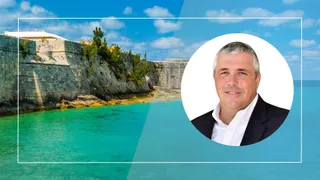Re/insurers commit more than $2m to open source Oasis Loss Modelling Framework
A group of institutions representing the global re/insurance industry is making a sizable investment in the Oasis Loss Modelling Framework and open source standards.
Bermudian institutions including RenaissanceRe and Willis Re joined with international peers to commit more than $2 million over two years to Oasis. The cash will support further development of the Oasis Loss Modelling Framework, an open modelling ecosystem.
Participating institutions included Aon, Allianz, AXA, Chubb, Guy Carpenter, Hannover Re, Lloyd’s, RenaissanceRe, Swiss Re, SCOR, Willis Re and the Insurance Development Forum (IDF).
Open source risk modelling will remove barriers to access, not only for companies but for governments, academics and research institutions, Oasis said, thereby driving down costs and increasing transparency and accessibility of catastrophe models. This will ultimately create more choice for risk managers everywhere, and particularly in emerging markets where the protection gap is highest, and for relatively poorly understood risks.
Dickie Whitaker, chief executive officer at Oasis, said the global approach to risk modelling is changing, away from non-standardised data, high costs and a closed box approach, to a more transparent and robust future. This will lead to improved analysis, understanding and pricing of risks, he said.
“This renewed industry support will see Oasis develop the fastest, most feature rich, performant and reliable catastrophe modelling platform available,” Whitaker promised. Models will be available to institutions in emerging markets, he added.
Whitaker said: “It is hugely significant to this mission to have the continued backing of ten leading re/insurance businesses and the IDF, that recognise the need for true innovation in catastrophe loss modelling.”
Andreas Märkert, chief risk officer and managing director of group risk management at Hannover Re, said the Oasis open modelling ecosystem can connect all stakeholders, increase modelling efficiency and decrease time-to-market for cat protection.
“It can foster a consistent view of risk and thus improve decision-making on risk mitigation and risk transfer options,” he added. “Hannover Re supports the initiative as an important contribution to tackle the challenges of climate change and the protection gap, especially in emerging markets.”
Ian Branagan, senior vice president and group chief risk officer at RenRe, said the development of an open modelling ecosystem will help private and public sectors alike. “For the insurance industry it can promote greater choice of available models, transparency and innovation as well as open data standards enabling supply chain efficiencies,” he said. “For the public sector it will help to close the knowledge gap on a global and local level and provide much needed analytical capabilities and support networks for developing risk insights in support of vulnerable and emerging economies.”
Ekhosuehi Iyahen, Secretary General of the IDF, said: “Risk insight is the foundation on which risk prevention and resilience programmes are built. The IDF is committed to finding ways to improve the availability and quality of risk information and supports efforts to strengthen national risk management systems given the dire implications for vulnerable communities. Building efficiency and reducing cost and duplication in the risk modelling and data ecosystem, through continuous development of open-source platforms, an industry wide interoperability programme and development of common open standards is a central point of achieving this objective.”

